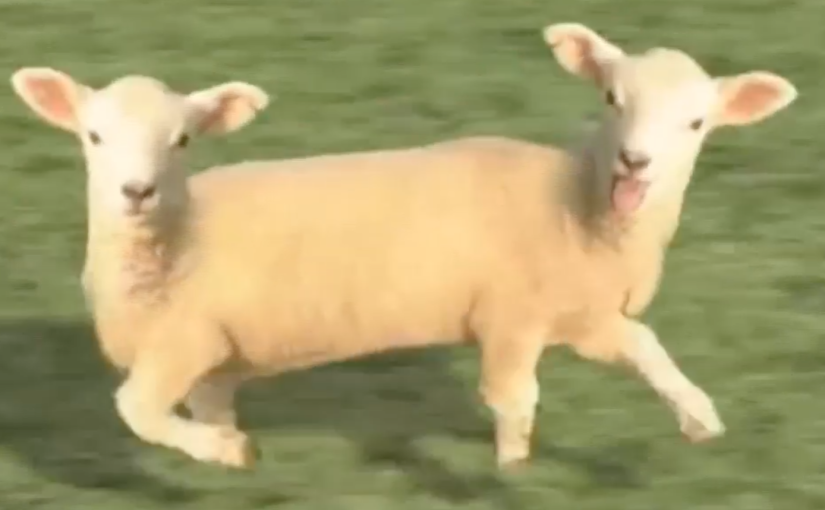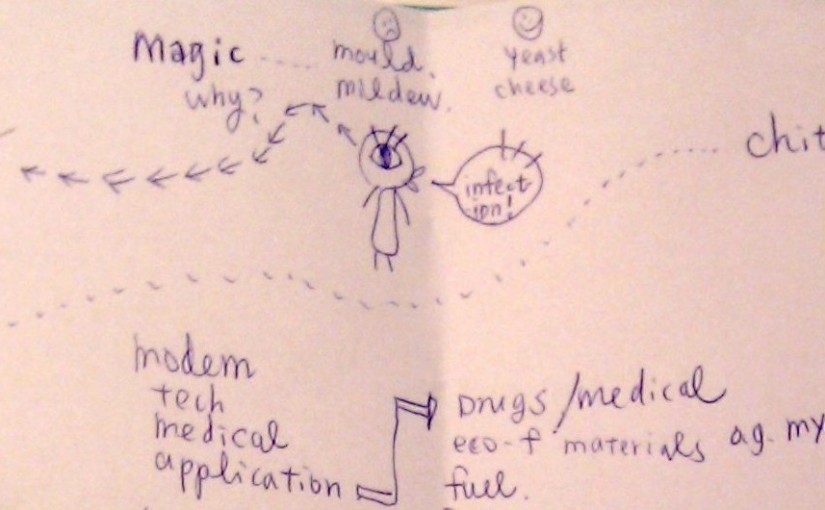Artists – John Baldessari, Bruce Nauman, René Magritte
- long and vague titles
- mixed media
- viewing things with different angles, dimensions
- displays a collection of ordinary objects in an unusual context, giving new meanings to familiar things
- open-ended, making you wonder and be bit a more imaginative for a while
- playing with reality and illusion, constant shifting back and forth
- contradiction, allusion
- provocative, surreal
To me, I’m most impressed about how they reminded me of everyday objects/events, also to view them in different way. Simply altering of angles, locations, combinations, scale, or colors seems to be enough to create big conflicts.
Literature – I LOST MY NOTEBOOK! So to be finished… T_T
Book to read: Philosophy of Nonsense, The Intuitions of Victorian Nonsense Literature.
And this is a part I’m fond of in Alice’s Adventures in Wonderland:
“Who are you?” said the Caterpillar.
This was not an encouraging opening for a conversation. Alice replied, rather shyly, “I—I hardly know, Sir, just at present—at least I know who I was when I got up this morning, but I think I must have changed several times since then.”
“What do you mean by that?” said the Caterpillar, sternly. “Explain yourself!”
“I can’t explain myself, I’m afraid, Sir,” said Alice, “because I’m not myself, you see.”
Subject Matter Projects
Sensory Masks – Lygia Clark (super related<3)
Sensory masks were gas mask-like hoods, that had herbs and aromatic seeds at the end of the “nose” or small mirrors at the location of the eyeholes. Thus the senses of the people that wear them are cut off the external world and a different vision is provided. However, there’s a darker side to the work as well; the masks could be seen as an entrapment, an imprisonment and prohibition of contact with the outer world.
These artifacts force us to rediscover the meaning of our routine gestures, to turn inwards. These objects help to experience rather than to been looked at.
Maxence Parache, Hyper(reality) – Maxence Parache
It uses a Microsoft Kinect to scan your physical environment and display it inside a virtual-reality helmet, so you can rotate the visual angle any way you like, with an Arduino-powered glove equipped with force sensors. In other words, you’re still able to physically interact with all the “real stuff” around you, but you can also pan your “mind’s eye” around the scene separate from your own body, just like you would in a video game.
A Way To Go – Studio AATOAA
It is like a grey squirrel balanced on a branch, fearless. It is a game and a solace and an alarm, a wake-up call to the hazards of today. At a moment when we have access to so much, and see so little, Way to Go will remind you of all that lies before you, within you, in the luscious, sudden pleasure of discovery.
Bonus: Bla Bla.
Augmented Hand Series – Golan Levin, Chris Sugrue, and Kyle McDonald
It is a real-time interactive software system that presents playful, dreamlike, and uncanny transformations of its visitors’ hands. Our investigation takes a position of exploration and wonder. Can real-time alterations of the hand’s appearance bring about a new perception of the body as a plastic, variable, unstable medium? Can such an interaction instill feelings of defamiliarization, prompt a heightened awareness of our own bodies, or incite a reexamination of our physical identities?
























